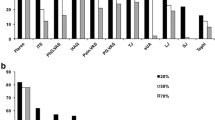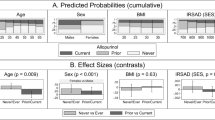Abstract
Despite the high prevalence of disease, gout management is frequently poor, with low patient adherence to urate-lowering therapy and attainment of recommended serum urate targets. Recent research has explored the patient’s experience of gout, providing new understanding of the impact of disease. Pain is central to the patient’s experience of gout. Poorly controlled gout leads to limitation of activities, reduced participation, and poor health-related quality of life. Although effective gout management with urate-lowering therapy improves many patient-reported outcomes in clinical trials, major gaps exist in patient understanding of disease and adherence to long-term urate-lowering therapy. Furthermore, a large mismatch in the perceptions of gout and its therapy exists between patients and health care practitioners. These issues may contribute to progressive and poorly controlled disease despite the availability of effective treatment. These findings provide potential pathways to improved clinical care of patients with gout. Work is now required to identify the optimal models of care for patients with gout that can be tested in clinical trials using outcome measures of relevance to individuals with this disease.

Similar content being viewed by others
References
Papers of particular interest, published recently, have been highlighted as: • Of importance •• Of major importance
Zhang W, Doherty M, Bardin T, Pascual E, Barskova V, Conaghan P, Gerster J, Jacobs J, Leeb B, Liote F, McCarthy G, Netter P, Nuki G, Perez-Ruiz F, Pignone A, Pimentao J, Punzi L, Roddy E, Uhlig T, Zimmermann-Gorska I. EULAR evidence based recommendations for gout. Part II: Management. report of a task force of the EULAR Standing Committee for International Clinical Studies Including Therapeutics (ESCISIT). Ann Rheum Dis. 2006;65:1312–24.
Stamp LK, Zhu X, Dalbeth N, Jordan S, Edwards NL, Taylor W. Serum urate as a soluble biomarker in chronic gout—evidence that serum urate fulfills the OMERACT validation criteria for soluble biomarkers. Semin Arthritis Rheum. 2011;40:483–500.
Choi HK. A prescription for lifestyle change in patients with hyperuricemia and gout. Curr Opin Rheumatol. 2010;22:165–72.
Zhu Y, Pandya BJ, Choi HK. Prevalence of gout and hyperuricemia in the US general population: the National Health and Nutrition Examination Survey 2007–2008. Arthritis Rheum. 2011;63:3136–41.
Winnard D, Wright C, Taylor WJ, Jackson G, Te Karu L, Gow PJ, et al. National prevalence of gout derived from administrative health data in Aotearoa New Zealand. Rheumatology (Oxford). 2011; in press.
Edwards NL. Quality of care in patients with gout: why is management suboptimal and what can be done about it? Curr Rheumatol Rep. 2011;13:154–9.
•• Lindsay K, Gow P, Vanderpyl J, Logo P, Dalbeth N. The experience and impact of living with gout: a study of men with chronic gout using a qualitative grounded theory approach. J Clin Rheumatol. 2011;17:1–6. This was a qualitative study of men with gout highlighting the impact of gout on patients and their families.
• Dalbeth N, Petrie KJ, House ME, Chong J, Leung W, Chegudi R, et al. Illness perceptions in patients with gout and the relationship with progression of musculoskeletal disability. Arthritis Care Res. 2011;Epub ahead of print. 31 Aug 2011. This was a longitudinal study of patients with a recent diagnosis of gout examining illness perceptions and the impact of these perceptions on outcomes over 1 year.
Taylor WJ, Schumacher Jr HR, Baraf HS, Chapman P, Stamp L, Doherty M, McQueen F, Dalbeth N, Schlesinger N, Furst DE, Vazquez-Mellado J, Becker MA, Kavanaugh A, Louthrenoo W, Bardin T, Khanna D, Simon LS, Yamanaka H, Choi HK, Zeng X, Strand V, Grainger R, Clegg D, Singh JA, Diaz-Torne C, Boers M, Gow P, Barskova VG. A modified Delphi exercise to determine the extent of consensus with OMERACT outcome domains for studies of acute and chronic gout. Ann Rheum Dis. 2008;67:888–91.
• Singh JA, Taylor WJ, Simon LS, Khanna PP, Stamp LK, McQueen FM, et al. Patient-reported outcomes in chronic gout: a report from OMERACT 10. J Rheumatol. 2011;38:1452–7. This is a discussion of the properties of patient-reported outcomes for use in clinical trials describing how pain, patient global assessment, activity limitation using the HAQ, and health-related quality of life using the SF-36 have been endorsed by OMERACT as validated patient-reported outcomes for gout trials.
Singh JA, Yang S, Strand V, Simon L, Forsythe A, Hamburger S, Chen L. Validation of pain and patient global scales in chronic gout: data from two randomised controlled trials. Ann Rheum Dis. 2011;70:1277–81.
• Sundy JS, Baraf HS, Yood RA, Edwards NL, Gutierrez-Urena SR, Treadwell EL, et al. Efficacy and tolerability of pegloticase for the treatment of chronic gout in patients refractory to conventional treatment: two randomized controlled trials. JAMA. 2011;306:711–20. This is a description of two randomized controlled trials of pegloticase in patients with severe gout demonstrating that patient-reported outcomes, including pain, activity limitation, and measures of health-related quality of life, can be modified by effective ULT.
Rome K, Survepalli D, Sanders A, Lobo M, McQueen FM, McNair P, et al. Functional and biomechanical characteristics of foot disease in chronic gout: a case–control study. Clin Biomech (Bristol, Avon). 2011;26:90–4.
Ten Klooster PM, Oude Voshaar MA, Taal E, van de Laar MA. Comparison of measures of functional disability in patients with gout. Rheumatology (Oxford). 2011;50:709–13.
Edwards NL, Sundy JS, Forsythe A, Blume S, Pan F, Becker MA. Work productivity loss due to flares in patients with chronic gout refractory to conventional therapy. J Med Econ. 2011;14:10–5.
Wu EQ, Forsythe A, Guerin A, Yu AP, Latremouille-Viau D, Tsaneva M. Comorbidity burden, healthcare resource utilization, and costs in chronic gout patients refractory to conventional urate-lowering therapy. Am J Ther. 2011.
Singh JA, Sarkin A, Shieh M, Khanna D, Terkeltaub R, Lee SJ, Kavanaugh A, Hirsch JD. Health care utilization in patients with gout. Semin Arthritis Rheum. 2011;40:501–11.
Khanna PP, Perez-Ruiz F, Maranian P, Khanna D. Long-term therapy for chronic gout results in clinically important improvements in the health-related quality of life: short Form-36 is responsive to change in chronic gout. Rheumatology (Oxford). 2011;50:740–5.
Hirsch JD, Terkeltaub R, Khanna D, Singh J, Sarkin A, Shieh M, Kavanaugh A, Lee SJ. Gout disease-specific quality of life and the association with gout characteristics. Patient Relat Outcome Meas. 2010;2010:1–8.
Petrie KJ, Weinman J. Why illness perceptions matter. Clin Med. 2006;6:536–9.
• Zhang LY, Schumacher HR, Su HH, Lie D, Dinnella J, Baker JF, et al. Development and evaluation of a survey of gout patients concerning their knowledge about gout. J Clin Rheumatol. 2011;17:242–8. This was an international survey involving patients with gout from the United States and China exploring understanding and perception of disease and therapies. Important gaps and variation in understanding were identified, particularly regarding the required duration of ULT.
Reach G. Treatment adherence in patients with gout. Joint Bone Spine. 2011;78:456–9.
Halpern R, Mody RR, Fuldeore MJ, Patel PA, Mikuls TR. Impact of noncompliance with urate-lowering drug on serum urate and gout-related healthcare costs: administrative claims analysis. Curr Med Res Opin. 2009;25:1711–9.
Harrold LR, Andrade SE, Briesacher B, Raebel MA, Fouayzi H, Yood RA, Ockene IS. The dynamics of chronic gout treatment: medication gaps and return to therapy. Am J Med. 2010;123:54–9.
Choi HK, Ford ES, Li C, Curhan G. Prevalence of the metabolic syndrome in patients with gout: the Third National Health and Nutrition Examination Survey. Arthritis Rheum. 2007;57:109–15.
Dao HH, Harun-Or-Rashid M, Sakamoto J. Body composition and metabolic syndrome in patients with primary gout in Vietnam. Rheumatology (Oxford). 2010;49:2400–7.
•• Harrold LR, Mazor KM, Velten S, Ockene IS, Yood RA. Patients and providers view gout differently: a qualitative study. Chronic Illn. 2010;6:263–71. This was an important study examining patients’ and health care professionals’ perception of gout therapy demonstrating major differences between the two groups.
• Sarkin AJ, Levack AE, Shieh MM, Kavanaugh AF, Khanna D, Singh JA, et al. Predictors of doctor-rated and patient-rated gout severity: gout impact scales improve assessment. J Eval Clin Pract. 2010;16:1244–7. This was a study of the GIS highlighting the differences in perception of disease between patients and their health care professionals.
•• Ogdie AR, Hoch S, Dunham J, Von Feldt JM. A roadmap for education to improve the quality of care in gout. Curr Opin Rheumatol. 2010;22:173–80. This is an important review that highlights potential strategies to raise awareness about gout and improve medical management.
• McLachlan A, Kerr A, Lee M, Dalbeth N. Nurse-led cardiovascular disease risk management intervention for patients with gout. Eur J Cardiovasc Nurs. 2011;10:94–100. This is a paper reporting the benefits of a nurse-led intervention to address cardiovascular risk in patients with gout. A model of treatment is described that provides a template for patient-centered management of gout.
Acknowledgment
Dr. Dalbeth is supported by the Health Research Council of New Zealand.
Disclosure
Dr. Dalbeth has served as a consultant for Takeda Pharmaceutical Co., Ardea Biosciences, Novartis, Abbott Laboratories, Roche, and Fonterra Co-operative Group; has received grant support from Fonterra Co-operative Group; has served on the speakers’ bureau for Novartis; and has had travel/accommodations expenses covered/reimbursed by Abbott Laboratories.
Dr. Lindsay reported no potential conflicts of interest relevant to this article.
Author information
Authors and Affiliations
Corresponding author
Rights and permissions
About this article
Cite this article
Dalbeth, N., Lindsay, K. The Patient’s Experience of Gout: New Insights to Optimize Management. Curr Rheumatol Rep 14, 173–178 (2012). https://doi.org/10.1007/s11926-011-0228-0
Published:
Issue Date:
DOI: https://doi.org/10.1007/s11926-011-0228-0




